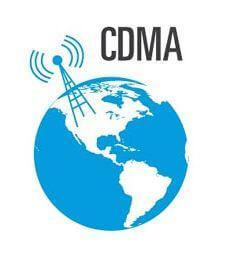What is the full form of CDMACDMA: Code Division Multiple AccessCDMA stands for Code Division Multiple Access. It is a channel access method used by several radio communication technologies. It is a digital cellular technology and an example of multiple access. It is generally used for mobile communication. Multiple access means that several transmitters can send information simultaneously over a single communication channel. In this system, different CDMA codes are assigned to different users, and the user can access the whole bandwidth for the entire duration. It optimizes the use of available bandwidth as it transmits over the entire frequency range and does not limit the user's frequency range. Thus, CDMA allows several users to share a band of frequencies without undue interference between the users. It is used as an access method in many mobile phone standards. CDMA technology was developed during World War II. It was developed by English allies to protect their wireless transmissions from jamming. When the war ended, Qualcomm patented this technology and made it commercially available. The first CDMA system was launched in September 1995 in Hong Kong by Hutchison Telephone Co. 
Usage
Categories of CDMA
Difference between CDMA and GSMThe major difference between CDMA and GSM are given below.
How is CDMA operative?The cellular architecture of wireless CDMA networks is formed by cell clusters. In a cell cluster, each cell has a transceiver with the necessary transmitting power, and mobile units are scattered around the cell's coverage area. Every mobile unit has a transceiver, which is made up of a sensitive receiver and a low-power transmitter that operates in a wireless cellular environment. Access interference, fading, and multipath propagation are some features of the cellular environment. The quality of service (QoS) for CDMA systems is significantly influenced by the near-far (N-F) impact. A broadcast from a user who is near the base station can interfere with and overpower a weaker transmission signal from a user who is further away. In order to do this, CDMA network providers employ receivers that are immune to the N-F effect as well as stringent power management techniques. The CDMA channel has a nominal width of 1.23 MHz. Soft handoff is a technique used by CDMA networks to reduce signal loss as a handset moves from one cell to another. Spread spectrum and digital together allow for substantially more signals per unit of bandwidth than analogue modes do. Due to CDMA's compatibility with other cellular technologies, nationwide roaming is possible. In its single-channel and eight-channel configurations, the original CDMA technology, also known as CDMA One, only enables transmission speeds of up to 14.4 and 115 kilobits per second, respectively. W-CDMA and CDMA2000 send data at rates that are many times quicker. The CDMA2000 family of standards includes Single-carrier Radio Transmission Technology (1xRTT), Evolution-Data Optimized Release 0, EVDO Revision A, and EVDO Revision B. The physical layer multiplexing protocol CDMA is frequently confused with the CDMA2000 family of protocols, which Verizon and Sprint both support. New 5g technologyOlder protocols will be replaced by 5G cellular technology, and CDMA will lose even more significance as 5G wireless systems evolve. Data transfer speeds on cellular networks are expected to significantly increase with 5G, making them competitive with fiber-optic networks. Beyond what is achievable with 4G, the technology provides better broadband capacity, reliability, and bandwidth. 5G is mainly powered by millimeter wave (MM wave) bands at 26, 28, 38, and 60 GHz. These frequency ranges allow for data transport rates up to 20 gigabits per second (Gbps). Massive multiple input, multiple outputs (MIMO) 64-256 antennas enable 5G to provide speeds that are at least ten times faster than those offered by 4G networks. Low-band and mid-band 5G cellular technologies operate between 600 MHz and 6 GHz, with the majority operating between 3.5 and 4.2 GHz. The 3,100 to 3,550 MHz and 3,700 to 4,200 MHz 5G wireless frequency bands are already in use in the United States. While Asia uses the 3,300-3,600 MHz, 4,400-4,500 MHz, and 4,800-4,990 MHz bands, Europe employs the 3,400-3,800 MHz range.
Next TopicCEO Full Form
|
 For Videos Join Our Youtube Channel: Join Now
For Videos Join Our Youtube Channel: Join Now
Feedback
- Send your Feedback to [email protected]
Help Others, Please Share










